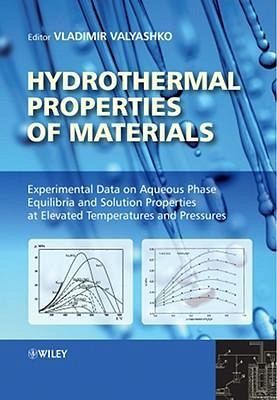
Hydrothermal Properties of Materials
Experimental Data on Aqueous Phase Equilibria and Solution Properties at Elevated Temperatures and Pressures
Herausgeber: Valyashko, Vladimir

PAYBACK Punkte
152 °P sammeln!
"Hydrothermal Properties of Materials: Experimental Data on Aqueous Phase Equilibria and Solution Properties at Elevated Temperatures and Pressures" is designed for any scientists and engineer who deals with hydrothermal investigations and technologies. The book is organized into eight chapters, each dealing with a key physical property of behavior of solutions, so that a reader can obtain information on: hydrothermal experimental methods; available experimental data and the main features of properties behavior in a wide range of temperatures and pressures; and possible ways of experimental da...
"Hydrothermal Properties of Materials: Experimental Data on Aqueous Phase Equilibria and Solution Properties at Elevated Temperatures and Pressures" is designed for any scientists and engineer who deals with hydrothermal investigations and technologies. The book is organized into eight chapters, each dealing with a key physical property of behavior of solutions, so that a reader can obtain information on: hydrothermal experimental methods; available experimental data and the main features of properties behavior in a wide range of temperatures and pressures; and possible ways of experimental data processing for obtaining the derivative properties.


